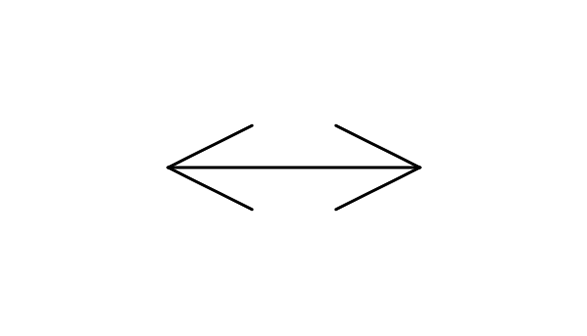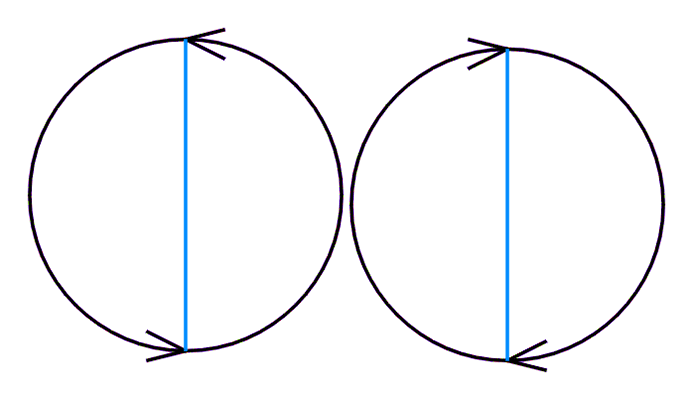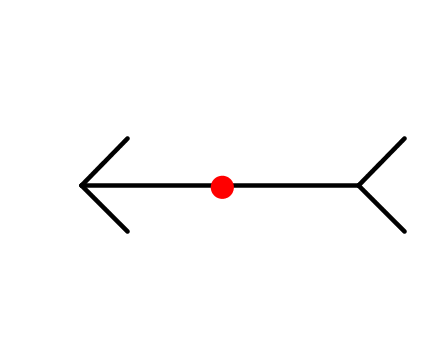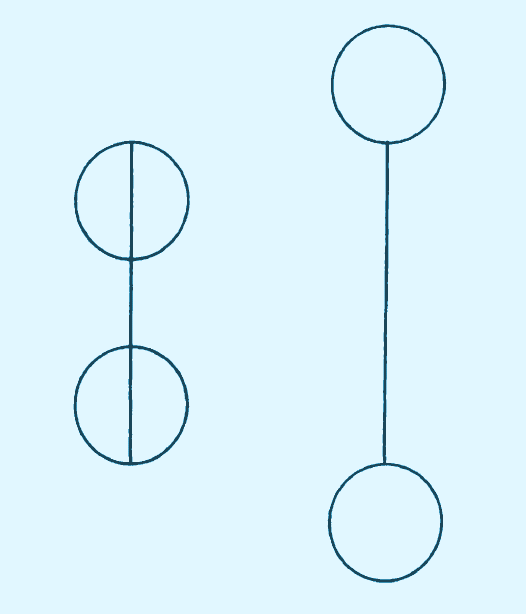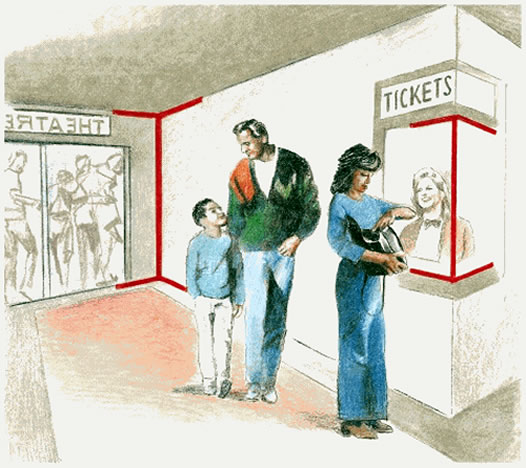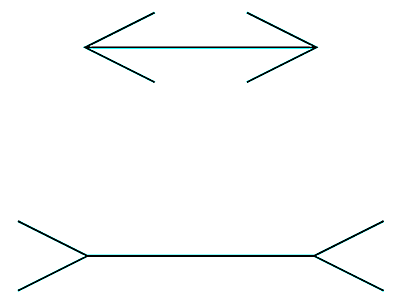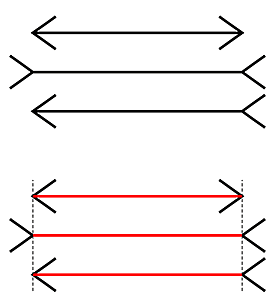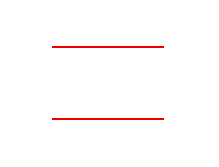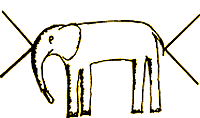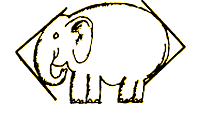|
|
Muller-Lyer
optical illusion
Franz
Carl Muller-Lyer (5 February 1857 - 29 October 1916)
Franz Carl Muller-Lyer, born Francis Xavier Hermann Muller was a
German psychologist and sociologist
The Muller-Lyer illusion is named after him.
|
|
The
Muller-Lyer illusion is an optical illusion consisting of
a set of lines that end in arrowheads.
The orientation of the arrowheads affects one's ability to
accurately perceive the length of the lines.
Like most visual and perceptual illusions, the Muller-Lyer
illusion helps neuroscientists study the way the brain and
visual system perceive and interpret images. Artists have
also utilized the illusion to great effect in their works. |
| |
|
|
|
|
| |
Description
The most well known version
of the Muller-Lyer illusion consists of two parallel lines,
one of which ends in inward pointing arrows, the other which
ends with outward pointing arrows. When observing the two
lines, the one with the inward pointing arrows appears to
be significantly longer than the other.
In
other versions, one of each type of arrow is put at each
end of a single line. The viewer attempts to identify the
middle point of the line, only to find that he/she is consistently
off to one side.
Explanation
of the Muller-Lyer illusion
It
is unclear exactly what causes the Muller-Lyer illusion
to take place, but there are a number of theories. One of
the most popular is the perspective explanation.
|
|
|
| |
In the three-dimensional world, we often use angles to judge
depth and distance. Living in a "carpentered world,"
we have grown accustomed to seeing corners everywhere. The
brain is used to viewing such angles and interpreting them
as far and near corners, and also uses this information to
make size judgments. When looking at the Muller-Lyer arrows,
the brain interprets them as far and near corners, and overrides
the retinal information that says both lines are the same
length.
This
explanation is supported by studies comparing the response
to the Muller-Lyer illusion by American children and both
rural and urban Zambian children. American children were susceptible
to the illusion, and the urban Zambian children were more
susceptible than the rural Zambian children. Since the rural
Zambian children were much less exposed to rectangular structures,
this would seem to support the perspective (or "carpentered
world") theory.
Interestingly
enough, the illusion also persists when the arrows are replaced
by circles, which have nothing to do with perspective or corners,
and would seem to negate the perspective theory.
Another
popular theory has been the "eye movement theory,"
which states that we perceive one line as longer because it
takes more eye movements to view a line with inward pointing
arrows than it does a line with outward pointing arrows. This
explanation is largely dismissed, as the illusion persists
even when there is no eye movement at all.
Also
popular has been the "assimilation theory," which
states that we see one line as longer because the visual system
is unable to separate the figure into parts. As a whole figure,
the line with inward pointing arrows is indeed longer. This
theory is also generally dismissed.
New
World Encyclopedia |
|
|
|
|
Muller-Lyer
illusion - variations |
The line appears to expand
or contract (Kenkel, 1913). |
|
Muller-Lyer
illusion - version of Brentano |
| |
|
Application
of Muller-Lyer illusion:
Conditional lines between the ends of the arrows appear slanted, although
they are actually vertical.
Interpretation by Akiyoshi Kitaoka |
|
Application
of Muller-Lyer illusion: the illusion of Judd
- Red dot is exactly in the middle of the horizontal segment,
although it seems that the left segment is smaller. |
|
| |
| |
| |
|
|
This
picture from the German satirical magazine "Pardon", 1970
|
| |
REFERENCES:
• Fineman, M. The Nature of Visual
Illusion. New York: Dover, p. 153, 1996.
• Luckiesh, M. Visual Illusions:
Their Causes, Characteristics & Applications. New York: Dover,
p. 93, 1965.
• Muller-Lyer FC (1889) Optische
Urteilstauschungen. Archiv fur Physiologie Suppl. 263–270
• Brentano F (1892) Uber ein
optisches Paradoxen. Zeitschrift fur Psychologie 3:349–358
• Muller-Lyer FC (1894) Uber
Kontrast und Konfluxion. Zeitschrift fur Psychologie IX p 1 / X
p 421
• Lewis EO (1909) Confluxion
and contrast effects in the Mueller-Lyer illusion. Brit J Psychol
3:21–41
• Rudel R & Teuber HL (1963)
Decrement of visual and haptic Muller-Lyer illusion on repeated
trials: A study of cross-modal transfer. Quarterly Journal of Experimental
Psychology 15:125–131
• Segall HH, Campbell DT, Herskovits
MJ (1966) The Influence of Culture on Visual Perception. Bobbs-Merrill,
Indianapolis
• Dewar RE (1967) Stimulus determinants
of the magnitude of the Mueller-Lyer illusion. Perceptual and Motor
Skills, 24 , 708–710
• Gregory RL (1968) Perceptual
illusions and brain models. Proc R Soc Lond B Biol Sci 171:24279–296Christie
PS (1975) Asymmetry in the Mueller-Lyer illusion: Artifact or genuine
effect? Perception 4:453–457
• Restle F & Decker J (1977)
Size of the Mueller-Lyer illusion as a function of its dimensions:
Theory and data. Perception & Psychophysics 21:489–503
• Adam J & Bateman L (1983)
A correlational analysis of symmetry between the arrowhead and featherhead
Mueller-Lyer illusions. Perception 12:119–129
• Pressey AW & Martin NS
(1990) The effects of varying fins in Mueller-Lyer and Holding illusions.
Psychol Res 52:46–53.
• Kenkel, F. (1913) Untersuchungen
über der Zusammenhang zwischen Erscheinungsgrösse und
Erscheinungsbewegung bei einigen sogenannten optischen Täuschungen.
Zeitschrift für Psychologie, 67, 358-449. |
|
| |
|
| |
|
| |
|
|
|
|
|
Copyright
© 2004 ABC-people.com
Design and conception BeStudio © 2016 |
|
|
|

